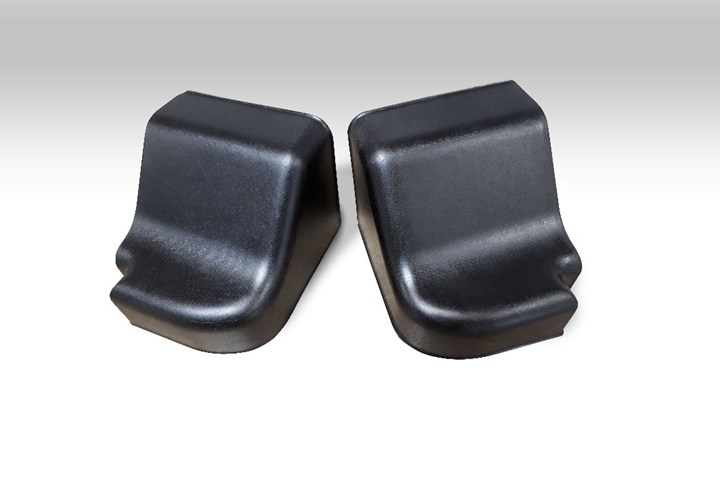Collaborative R&D project aims to develop nanocomposite material for interior aircraft application
Pioneered by AIM Altitude, Sheffield Hallam University and Composite Evolution, the thermosetting resin system has resulted in cured prepregs showing improved fire properties.

Source | AIM Altitude
It was reported on July 27 that AIM Altitude (Dorset, England), designer, manufacturer of cabin interiors has been working with Composites Evolution Ltd. (Chesterfield, England) and Sheffield Hallam University (Sheffield, U.K.) on a research and development (R&D) project centered around developing a nanocomposite material with exceptional fire and mechanical performance, suitable for use in aircraft interior applications.
Backed by Innovate UK in Swindon, the collaborative team has reportedly developed a thermosetting resin system, which is a blend of poly(furfuryl alcohol) (PFA) with a specific additive mix, for the production of glass fiber prepregs using a hot-melt process.
According to AIM Altitude, the successful conclusion of the project in August 2020 is expected to bring to market a new family of materials with improved performance, enabling greater design freedom, including new decorative finishes and a safer passenger environment.
“Materials and design options for composites in fire-critical applications are currently very limited,” says Vernon Thomas, engineering manager at AIM Composites. “The nanocomposites we have developed have led to enhanced performance all around. It is a better, safer product, which is bio-based and renewable. The fire, smoke and toxicity [FST] performance is better than phenolics. The reduced porosity has great advantages for the finish, reducing costs considerably, and peel strength improvement gives vital increases to integrity and durability. All of which offers airlines greater opportunities for differentiation.”
The PFA resin base is said to be produced from biomass waste, which has a mature, secure, low-cost supply, and does not compete with food production, thus improving its sustainable. The team says the composite is similar to phenolic, but without the toxic phenol and formaldehyde compounds, making it safer across the whole product lifecycle.
“Working with Sheffield Hallam University and AIM Altitude has given us the opportunity to fully explore our new product ideas. The nanocomposite solution we have developed has so many improved features it will redefine composites capabilities,” says Dr. Brendon Weager, technical director of Composites Evolution.
The resulting cured prepregs have been tested at AIM Altitude’s facilities in Cambridgeshire, England, and have reportedly shown better fire properties than current phenolic prepregs. According to the team, the surface finish is also superior, which is said to reduce downstream costs in defect rectification and preparation for decoration. The enhanced fire properties will also permit the use of some decorative finishes not currently available for commercial aircraft interiors.
“This collaborative project has been a great opportunity to investigate and apply some really interesting materials science to a leading application with potentially great impact,” adds Dr. Francis Clegg, Principal Research Fellow at Sheffield Hallam University.
Related Content
-
Optimized approach to predict delamination failure in CFRTP structures
ARRK Engineering and Mitsui Chemicals improved delamination prediction accuracy to help optimize absorbed energy/failure load for an overmolded TAFNEX CF/PP UD tape bumper beam.
-
Active core molding: A new way to make composite parts
Koridion expandable material is combined with induction-heated molds to make high-quality, complex-shaped parts in minutes with 40% less material and 90% less energy, unlocking new possibilities in design and production.
-
Composite sidewall cover expands options for fire-safe rail components
R&D project by CG Rail explores use of carbon fiber-reinforced thermoplastics and recycled manufacturing scrap to meet fire safety, weight and volume targets.
















